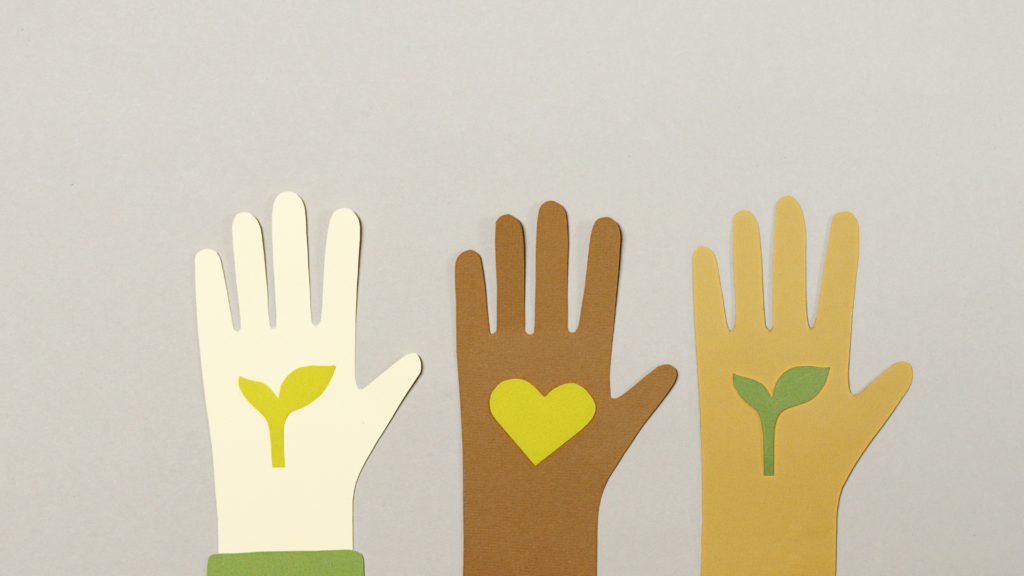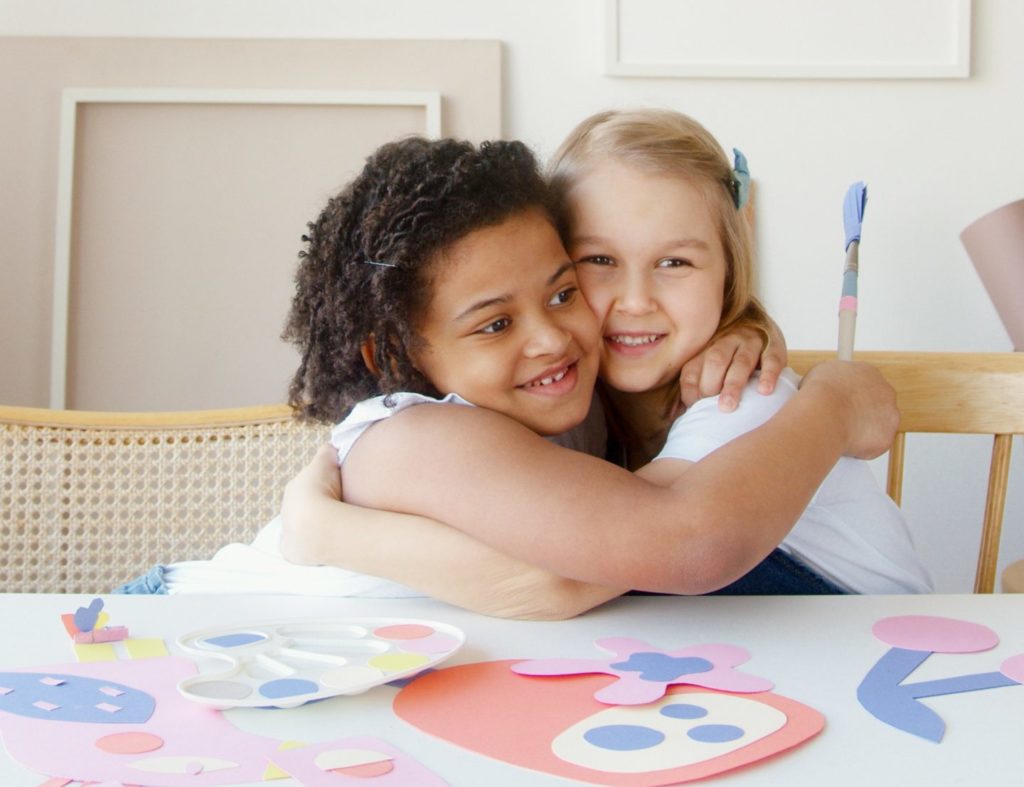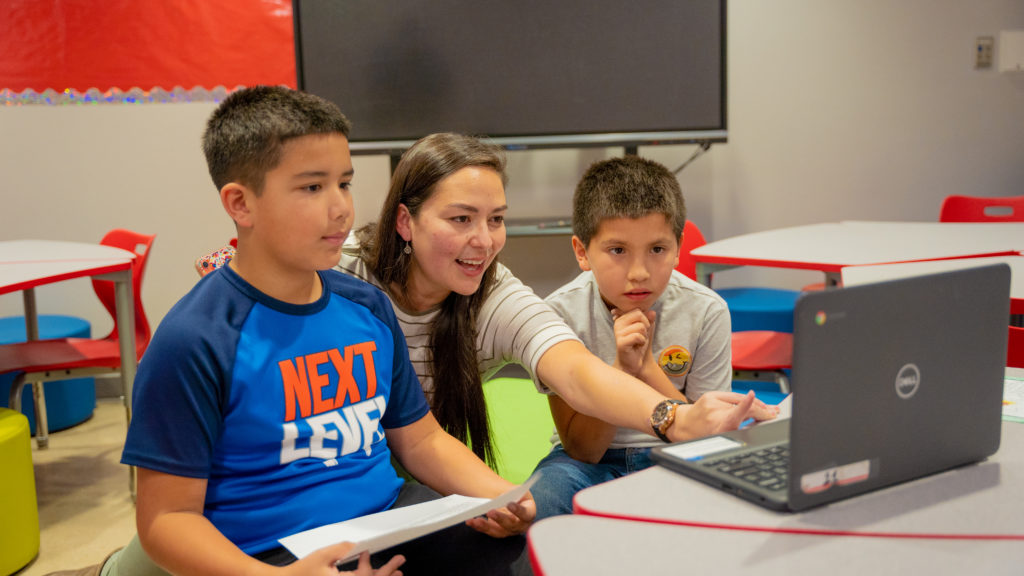Climate change is a global problem that transcends national borders, causing events like extreme weather, rising sea levels, food shortages, water scarcity, and the loss of wildlife all around the world. Teaching climate change in the classroom is crucial, as it helps students understand these challenges, use critical thinking to make informed decisions about their future, and learn how they can be part of the solution.
However, climate change education encompasses more than science – it requires a holistic approach that integrates scientific knowledge with empathy. When teaching climate change to students, it’s essential to infuse the three dimensions of empathy: feeling, thinking, and acting. For example:
- Emotional empathy (feeling what others feel) by acknowledging and connecting with students’ feelings, such as anxiety, frustration, anger and sadness
- Cognitive empathy (understanding others’ emotions and thoughts) by exploring students’ experiences, hopes, and concerns around climate change
- Behavioral empathy (helping others in a meaningful way) by empowering students to take action to protect and restore the environment
In this blog post, we will explore six practical strategies to empower students to become empathetic environmentalists and actively contribute to a more sustainable future.

1. Practice mindfulness
Mindfulness is an essential skill in navigating complex emotions related to climate change – for educators and students. Ensure that you have the tools to foster your own emotional well-being. This not only benefits you, but also equips you to guide your students more effectively. For example, dedicate time to mindfulness exercises like meditation, deep breathing, yoga, and gratitude journaling.
To foster students’ well-being, it’s important to infuse mindfulness practices throughout your school day. These practices will help them regulate their emotions, reduce stress, and cultivate a sense of inner peace and joy. When students experience overwhelming feelings around climate change, mindfulness helps them identify their feelings without judgment, and respond to them in a more constructive way. Mindfulness also helps them anchor their awareness in the present moment, and reinforces a positive emotional connection with the world.
By practicing mindfulness regularly, we can build our emotional resilience and develop the inner strength to address environmental issues.
Consider implementing mindfulness sessions based on the following Empatico activities:
- Three Kind Wishes
- Body Scan Meditation
- Animal Arms: Breathing Exercises
- Grounding Like a Tree
- Breathe, Move, and Rest

2. Listen to each other
When teaching climate change, establish a classroom environment where students feel safe expressing their thoughts, emotions, and concerns. To do this, engage students in open-ended conversations where they can freely share their perspectives and feelings. Ask questions like:
- What comes to mind when you hear the term ‘climate change’?
- What emotions or concerns do you have about climate change?
- Can you share any personal experiences or observations related to climate change?
- What are your hopes for the future?
Validate students’ emotions as being normal and understandable. Encourage them to listen carefully to each other, ask thoughtful questions, and respond with empathy and understanding. If students have different perspectives about climate change, emphasize the importance of listening to each person and treating them with respect and kindness. Consider sharing your own perspective to further connect with students. Your vulnerability can inspire trust within the classroom, and demonstrate to students that they are not alone in their feelings and concerns.
Furthermore, encourage students to broaden their understanding of climate change by listening to the people who are most impacted by it, even within their own neighborhoods. For example, some families might live in homes more prone to flooding. Invite students to speak to community members about their experiences (with a trusted adult). This will help them develop a deeper sense of empathy and awareness of how climate change affects different people.
During these conversations, it’s possible that students experience strong emotions, especially if they have been directly impacted by climate change. During these instances, refer to the mindfulness practices shared in the first strategy, and be attentive to any signs of distress. If needed, emphasize that students can leave the conversation if they feel overwhelmed.

3. Highlight positive news
Instill hope and optimism by showcasing positive actions that are being taken by individuals, communities, and organizations around the world. For example, you might teach students about youth activists like Leah Namugerwa, Bruno Rodríguez, and Licypriya Kangujam who are working hard to protect the planet.
Or, explore recent events like the first constitutional climate trial in the United States, the world’s largest wind farm that is being built in China, or a Panama law that gives legal rights to nature.
You might also invite guest speakers from local nonprofits or environmental organizations to share their experiences and efforts in combating climate change. This allows students to see real-world examples of positive actions, and provides opportunities for them to get involved or support these initiatives.

4. Take individual actions
Climate change can often seem like an overwhelming challenge, and it’s easy for students to feel powerless when faced with such a global crisis. Explain to students that their individual actions (no matter how small) can make a significant contribution to positive change. These actions will help them build a sense of agency and accomplishment, and provide them with a source of hope and encouragement to tackle larger challenges in the future.
Encourage students to reflect on their strengths and interests, and challenge them to think about how they can take action in their own lives and communities. For example, students might:
- Calculate and reduce their carbon footprint
- Start a composting or recycling program
- Create and display posters to raise awareness
- Check their country’s progress towards climate action
- Plant indigenous trees
- Write letters to local leaders
- Consume more sustainable, locally-produced foods
- Engage in a conversation with family and friends about why nature is important to them, and actions that they plan to take to protect the environment

5. Incorporate outdoor activities
Spending time outdoors helps foster a deep connection with nature and reduces anxiety. Organize gratitude nature walks and other experiences that cultivate a sense of wonder, curiosity, and gratitude for the natural world.
During these activities, emphasize the importance of harmony and connection with the environment, and our collective responsibility towards the planet. Ask questions like:
- Why are you grateful for the environment in our community? What do you love about it?
- What are some benefits that our environment provides to humans and other living creatures? (e.g., shelter, food, and water)
- Should this space be protected for all the living creatures that depend on it (including us)? What actions can we take?

6. Encourage storytelling
Give students the opportunity to create their own “climate story” to describe the impact of climate change on their community, their hopes for the future, and actions that they will take to achieve this vision. Then, facilitate an exchange of these stories – whether within the classroom, or with a partner class through live virtual exchanges on the Empatico platform. After the exchange, guide students through reflecting on the similarities and differences between their stories, and what these comparisons can reveal about each individual’s values and lived experiences.
When students are given the opportunity to share their stories with others, it not only allows them to express themselves, but also fosters a sense of empowerment and purpose. By hearing and appreciating each other’s stories, students will feel heard, validated, and supported in their concerns about climate change. This experience also creates a sense of community, and encourages collaboration as students realize they are not alone in their hopes for a more sustainable future.

Conclusion
Climate change is an important subject that must be taught in every classroom. However, it is more than simply learning about the causes and effects of the ‘greenhouse effect’. It is also about equipping students with the values, knowledge, and resilience necessary for them to become informed, compassionate global citizens. By teaching about climate change in the classroom (and beyond), we can create a generation of young people who are aware of the importance of protecting the environment and are prepared to take action.
In order to effectively teach climate change, it is necessary to acknowledge the emotional toll that these discussions can take on students. Educators must guide them through navigating their feelings and transforming them into positive actions. Through the six strategies described above, you can help create a supportive classroom environment that fosters open dialogue, encourages personal and collective action, and empowers your students to become future leaders.
To introduce climate change to your students, check out the following activities:
For more strategies around teaching climate change, watch this online webinar which includes the following featured speakers:
- Dr. Jenn Cao, Interim Director at the UC Irvine Science Project
- Dr. Michael Jabot, SUNY Distinguished Professor of Science Education at SUNY Fredonia
- Elaine Miller-Karas, LCSW, Co-Founder & Director of Innovation at the Trauma Resource Institute
- Abdul Malek, Educator and Design Thinker, currently based in Bangladesh
- Dr. Jennifer Williams, Co-Founder & Executive Director at Take Action Global
- Jennifer Manise, Executive Director at Longview Foundation
- Travis Hardy, Senior Director of Programs at Empatico (moderator)
Additionally, listen to this audio recording of Empatico’s SXSW EDU panel, “Navigating Climate Anxiety with Resilience & Hope,” which includes the following featured speakers:
- Amy Barsanti, Educator at Jamesville Elementary School, Martin County Schools
- Emilee Elingburg, Director of Educational Programs, The Bee Cause Project
- Lauren Flemming, Educator Community Manager at Empatico (moderator)
Empatico would like to thank The Longview Foundation for their support of our climate change programming.



